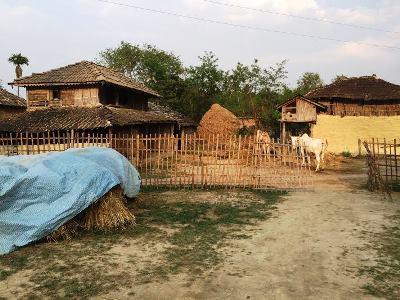Since Tharu s belong to the ethnic groups that are engaged in agriculture originally, it has been known that the ethnicity of Tharu came from the word, “Thaur”. “Thaur” means a plain region and they are called as “Tharu s” because they have been living in the plain region.
In the history of Nepal, Tharu is recognized as a unique ethnic group. They have their own customs/dresses, culture, art, religion, traditions and so on. Among Tharu s, there are different family names: Khan Tharu, Chaudhary, Raut, Majhi, Basar, Dhami, Gachchhadar, Sardar, Mandal, Rana, Bhagat, Thandar, Phanaut, Tabdar, Modi, Khawas, Tharuni, Haldaliya, Biswas and Thanaut Singh. As there are less educated people and more agriculture-engaged people in Tharu community, there has been little effort of ethnic identification and development.
Tharu community is known as one of the largest ethnic communities in Nepal and comes into the forth rank among them. Ramanand Prasad Sing pointed that Tharu s came originally from India to Kapilbastu and then migrated into Mechi up to Mahakali in Nepal according to the oral transmission of our ancestors.Most of Tharu s have been heavily engaged in agriculture and haven’t developed much of their identification in other occupations. Therefore, many Tharu s are apt to change their family names after moving their residence from their original home.
